In July I will be attending the Mindfulness Based Living Course (MBLC) Level 2 Teacher Training Retreat and I have found out that as part of that training I will be delivering a ten-minute talk on settling the mind.
I thought I would share my thoughts here about what I have learned so far from my own practice, and if you have anything to add to help me on my journey to teaching (delivering or facilitating – I prefer to say) I will be most happy to hear from you! I am not an expert and am finding my way through, just like you. My talk may go something like this.
Settling the mind is the very first practice we undertake after recognising the unsettled mind and this settling is how we begin every subsequent practice.
During the exercise of recognising the unsettled mind we notice how the mind continuously seeks amusement, entertainment and detests what it perceives as a vacuum. Think of those times when there’s an awkward silence. When in a waiting room with no magazines. Stuck in a traffic jam. We have all noticed those times when we are driving or being driven – sometimes we are so lost in thought we don’t even remember where we are or where we have been. So for our first exercise we do little practices and notice where the mind is, as we ring the bell over and over again. Wow. We see we are not in control of our minds, at all. Rob Nairn, a founder of this course tells us that Mindfulness is to know what is happening while it is happening (without judgement). We begin our journey by looking into the workings of our own mind and thought pocesses.
When I first started out in Mindfulness practice – I believed I was not separate from my thoughts. I mean I had not even considered that it was a thing. My being and my thoughts surely were all one and the same thing as René Descartes said – ‘I think therefore I am’. I understood this quote as because I am thinking, it is a sign that I am alive and that’s ME! but since mindfulness has been cultivated I now have a new additional understanding of the quote. Now with a shift of the emphasis to the I – ‘I think therefore I am’– I think, and my thoughts are what creates my sense of identity; a now-solid reified ME-person.
So in my first attempts to meditate I thought me and my thoughts were same thing; the idea that I could be separate from my thoughts seemed too abstract – too way out.. I remember just not getting it. It was like an impenetrable wall between me and ‘mindfulness’. I was stuck to my thinking like glue. Think of your thoughts like bubbles! Think of them like wild horses galloping by – you don’t need to get on them! Think of your thoughts like clouds appearing in the sky! Eh? This is all too difficult at the beginning. What works for you doesn’t necessariy work for me. I think I need to remember how difficult these first stages were for me to be a good ‘teacher’. Our minds are conditioned and that means we all perceive, and experience everything from different perspectives and conditioning. How we may perceive a thought is a very personal thing. Suggestions are good, but can be equally blocking to progress – we can get stuck on the metaphor and we’re back into thinking. The mind loves to sneakily and quietly move from meditating to thinking about meditating, from observing thoughts to thinking about observing thoughts…
At an early beginner’s meditation session in my 20’s… I sat there, not meditating, just thinking about meditating and wondering what it might be that I was supposed to be doing. I can quite clearly remember the content of my thoughts. The exotic stillness in the shrine room, the colours, the sheer oddity of sitting in a Buddhist temple in front of a giant golden Buddha on a cushion with my legs crossed was an experience in itself – full of wonderful distraction, but it wasn’t a mindfulness meditation. Looking back it was a great exercise in being lost in thought.
Meditating is not ‘easy’ and it’s not a quick fix. We need determination, guidance and support. Our thoughts are seductive – the mind is intelligent and our egocentric preference system (EPS) has its own agenda which we are not aware of, until we get into deeper practices. But we have to start somewhere in order to see what lies beneath our preferences, our attitudes and moods. If we could only stop getting sucked into thinking, ease the agitation and be still, our mind might settle – like the mud stirred up in a jar of water – if we simply leave it – it will settle and all will become clear.
This is what we do in settling the mind. We begin to notice the mind finding drama where there is none. Urgent to-do lists appear as soon as we sit on the cushion.
This addiction to thinking is a deeply rooted conditioned pattern. Hungry for experience our thoughts take us away from what’s happening for us right here under our noses. We can miss a lot of life in this way. So this is why we start with settling the mind. We begin to get know mind & its habits just by observing them while they are happening. This sounds easy but it takes some patience and commitment. Considering our motivation and intention at the start of each practice helps us stay committed to our journey.
At the start it may feel like you can’t do it. This is why it is called practice. And even experienced mediatators like the Dalai Lama still practice.
We might think that meditating is about making the mind go blank – no; we are not trying to blank the mind, nor change, block out thoughts or suppress anything. This would create more tension in the mind – we are just bringing a presence of mind to whatever experience is moving through us – noticing the agitation of mud in the jar.
We are not dealing with the content of the thoughts – it may help to label them as thinking, or as past, future, daydreaming etc. We are not trying to change the nature of our mind – in Settling the Mind we are simply training ourselves to notice what the mind gets up to, hopefully with curiosity and a sense of humour.
So as the mind settles we need to watch ourselves for any feeling of striving, trying too hard or feeling like perhaps you are doing it wrong – failing somehow – these are more subtle thoughts and attitudes and expectations to look out for. But as soon as we notice we have drifted off? This is the moment to celebrate our success!
As we start to see these more subtle thoughts we can know that we have successfully cultivated some mindful awareness; by noticing our conditioned mind habits we are directly tackling the root of the disturbance which is:- being involved with our thoughts. We are on the road to Insight.
In these initial stages of training, we need something to help us to hold our unruly mind in focus– so we actively give our mind something to do – an anchor – something for our mind to do to keep it occupied as we take our first steps in training it. Almost a distraction technique but we are in control this time. We use the breath as our anchor. In this way we focus our attention on the breath wherever we find it in the body.
This sounds easy! But it isn’t!
At the start may find we can hold our attention- for maybe 3 seconds? Maybe tomorrow you will manage 6 seconds! Another practice I have tried is counting 21 breaths. Each time you lose it you go back to the start. (I have found this very useful, but we don’t use this method in the initial teacher training.) To help maintain this awareness of our breath in the body we use additional techniques: counting, or phrases, breathing in, breathing out, or simply feeling the sensations in the body wherever we might feel them as the breath flows in and out of the body. We notice the mind wanders. We come back to counting and with a light focus on the breath.
We bring our awareness to our breath over and over again. As we bring it back we simultaneously know it is going to go off again! We are training our mind to remember to be mindful! The root of the word is from Sanskrit smrti which means ‘remembering or calling to mind’ – re-minding…
At times we become completely lost in thought – even for some time. It is so interesting to note how we are unaware that our awareness has been hijacked.
We learn the mind has this habit to drift off and this isn’t necessarily a bad thing – it’s just what mind does it’s not inherently bad or good – there are evolutionary reasons for it to do this – for survival purposes – so we just learn this and watch for this kind of judgement around our ability to stay focused. We are not here to make judgements about our minds or ourselves – only to notice that judgements naturally arise. Yongey Mingjur Rinpoche reassuringly spoke of judgements arising in his mind – he laughed – he said we cannot stop them but we can see them for what they are we don’t need to believe them. Bringing an attitude of curiosity, kindness and acceptance into our practice is an essential ingredient. We can add this to our intention at the start of our practice.
During our practice session- if we hear a phone bleep or another distracting noise – this is a moment of choice – if we are aware.
Where will we choose to put our energy? Energy follows focus so do we choose to follow the thoughts around the distraction and put our energy there? (Unwittingly feeding energy into thoughts that are possibly problematic thereby strengthening those habits?) Or will we choose to gently guide ourselves back to sitting here in this room with attention on the breath?
The breath used as an anchor in this way helps the mind to find path back to presence in the body when it has drifted off into thinking, which it will, over and over again. Like training a homing pigeon we gently nurture its habit to come home to roost, right here and now.
Eventually this mindful attention will stay with us throughout our days as we talk and walk and move around in our lives – with an alive presence.
So we can be grateful for this mind that we can train. Mindfulness will truly give us what we need to begin to relate differently to our thoughts, feelings and sensations.
If we are prepared to put in the time on the cushion we can learn to settle our minds – old outmoded habits will fall away and we welcome more ease in our lives and in our relationship to ourself and to others.
This week, as part of our Weekly Challenge, I invite you to revisit this practice of simply settling the mind. Using short the exercise from the MBLC APP ( which you can download for free HERE). The settling practice is only 10 minutes long and so it’s easy to fit in around and within a busy day. YOU CAN LISTEN TO IT HERE.
I’d love to hear your experiences of starting out on your mindfulness journey and any seminal moments you experienced as your mindful awareness began to shine through the muddy water of the agitated mind! You can email me at membership@mindfulnessassociation.net, as Jacky ad I always love to hear from you. Any top tips for teaching also welcome!
Have a great week, and may your mind settle this week that you may see clearly the nature of your mind. With gratitude to my sangha of trainee teachers and mindfulness practitioners.
Thank you.
Lisa Hellier.


